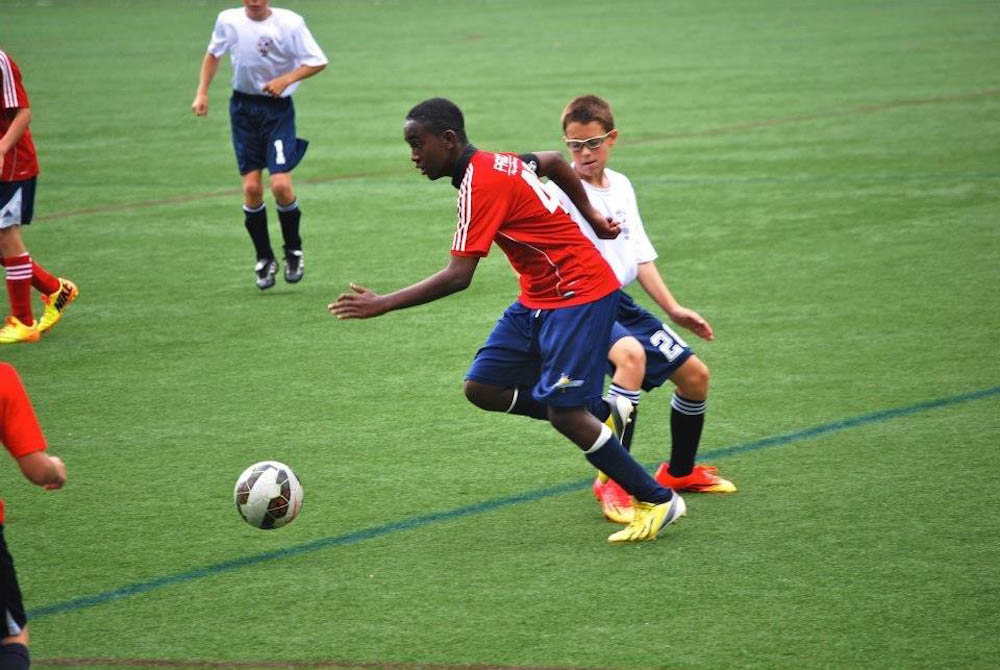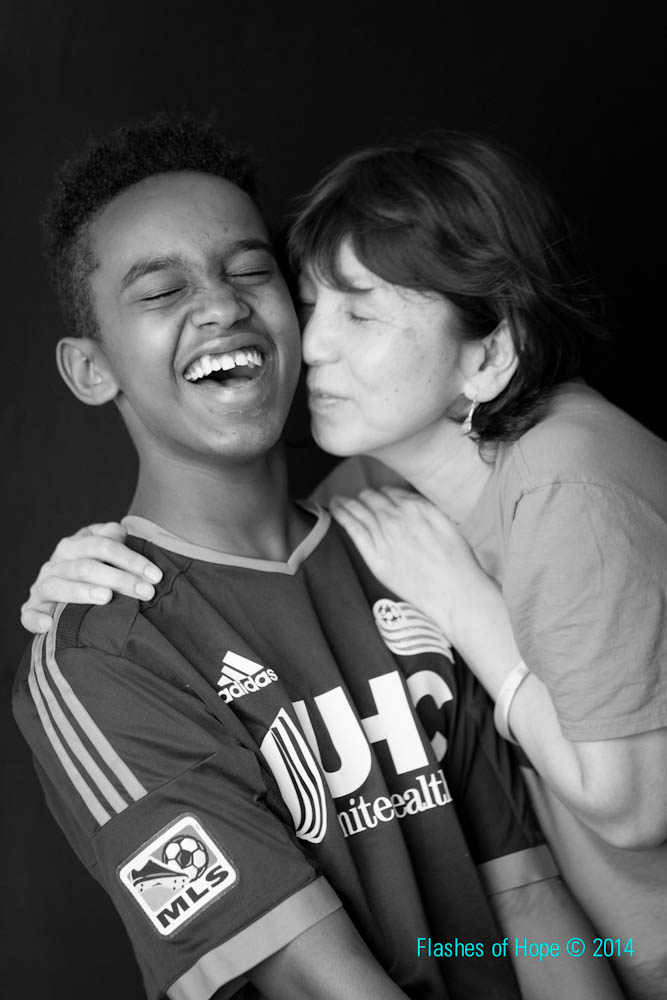Some 100 days after receiving a stem cell transplant to cure his severe aplastic anemia, 13-year-old Behaylu Barry still couldn’t invite friends into his home. He can’t return to school until January, when his immune system will finally be strong enough to fight the pathogens present in indoor spaces. Yet Behaylu was doing so well that he was cleared to play soccer – outdoors, of course — for the first time since February, when he was diagnosed with the life-threatening blood disorder.

On August 23, Behaylu walked onto the field with the Exeter (N.H.) Hawks for a two-game pre-season tournament. The Hawks won both games, with Behaylu scoring one goal and making five assists. His mother, Midori Kobayashi, cheered so much and so loudly that she lost her voice.
“Soccer is the biggest step back to a normal life,” Behaylu says. “It’s one giant leap.”
“He pushed himself beyond his limits,” says his father, Aidan Barry. “But he’s 13. What do you do? Put him in a cage? It was a magical time.”
As rare as his condition is, Behaylu’s story is particularly unusual. Adopted from Ethiopia at 6, his best chance for cure lay in finding a matched sibling stem cell donor – a task his clinicians at Dana-Farber/Boston Children’s Cancer and Blood Disorders Center initially thought was impossible. But Behaylu’s adoptive parents had been paying for the education of his siblings in Africa, and two turned out to be perfect matches. On May 12, after five days of intensive chemotherapy to kill his diseased bone marrow, Behaylu received stem cells from his brother Rediat. Along with his sister Eden, Rediat had come to America on a 30-day journey that had them flying on an airplane for the first time and taking their first hot showers.
Now Behaylu’s body is reconstituting the bone marrow his illness had devastated. It’s producing the oxygen-carrying red blood cells, infection-fighting white cells, and clot-promoting platelets whose absence had left him dangerously susceptible to infection and bleeding. Since his transplant, he has been infection-free and has not contracted graft-versus-host disease, which affects 10-20 percent of patients with a matched sibling donor. His doctors will follow him for a year.

“Behaylu is almost certainly cured,” says Leslie Lehmann, MD, clinical director of Dana-Farber/Boston Children’s Stem Cell Transplant Center. “The new bone marrow cells from his brother are doing very well. We have every expectation he will lead a full and normal life.”
Since returning to his Stratham, N.H., home in June, Behaylu has seen friends in his back yard only – plus on a trip or two to town during which he stayed outside when they entered stores. He takes 47 pills a day and can eat fresh produce only at home, after it’s been thoroughly washed according to his clinicians’ instructions. His sense of taste is returning, and after getting the go-ahead in August to eat restaurant food, he tried his favorite, a Five Guys hamburger, albeit without lettuce and tomato.
After missing most of the spring semester, Behaylu caught up with his studies over the summer, earning high honors, and he’ll complete his first semester of eighth grade through Skype, Facetime, online learning and tutors.
When he returned to his soccer team, Behaylu got no more special treatment than a “Hey, dude, it’s been a while,” which he appreciated.
“I don’t like being special unless it’s soccer and I scored a goal,” Behaylu says. “If it’s something bad” – like getting severe aplastic anemia – “I don’t want to be known for it, because it’s not something I did. In soccer, I worked for it. I earned it.”
